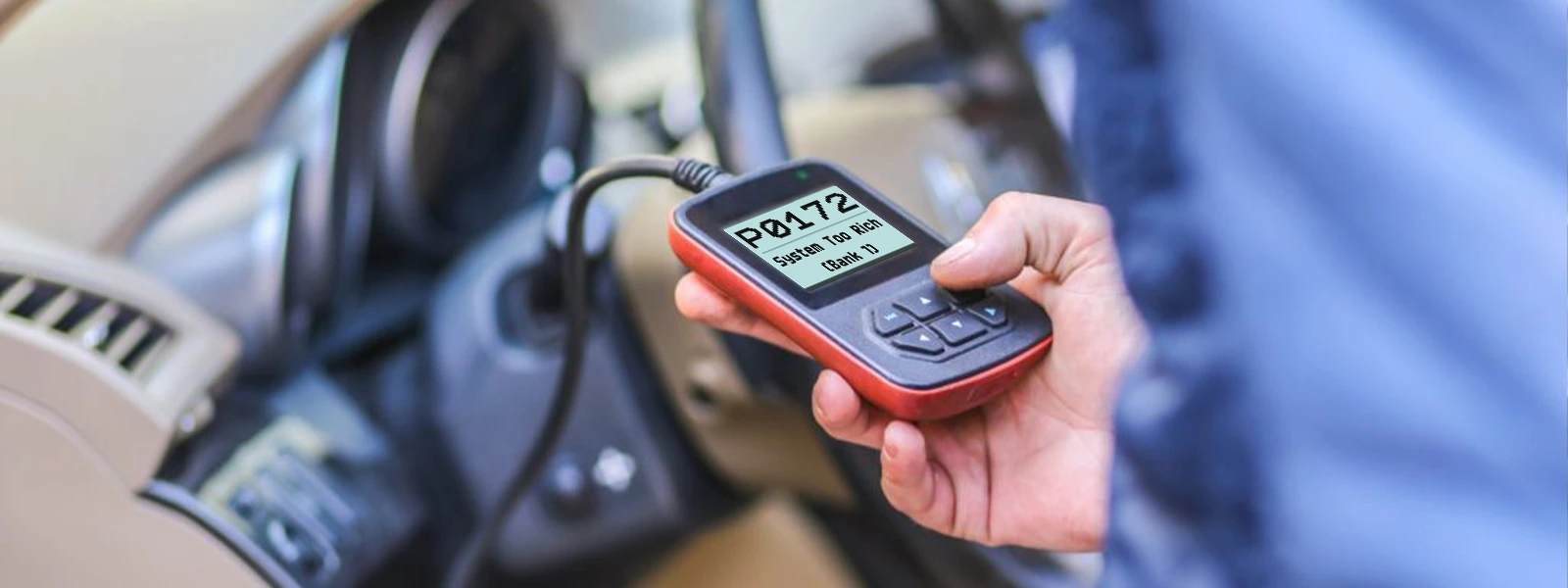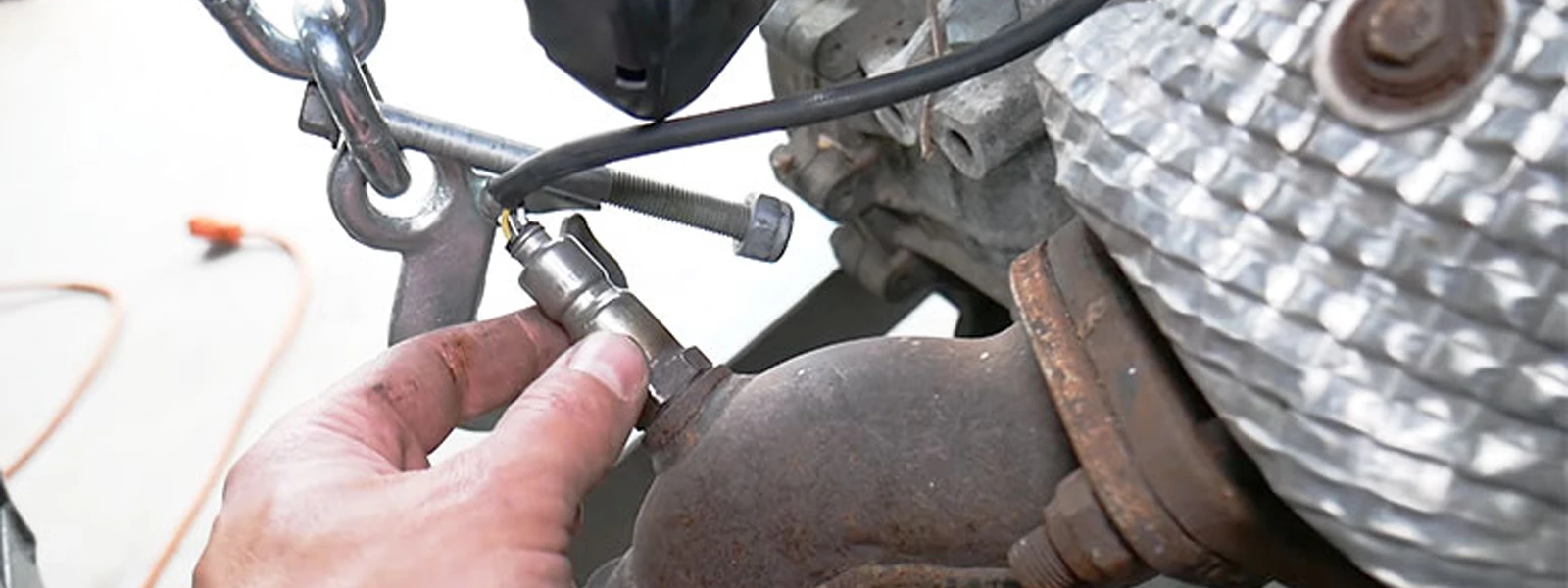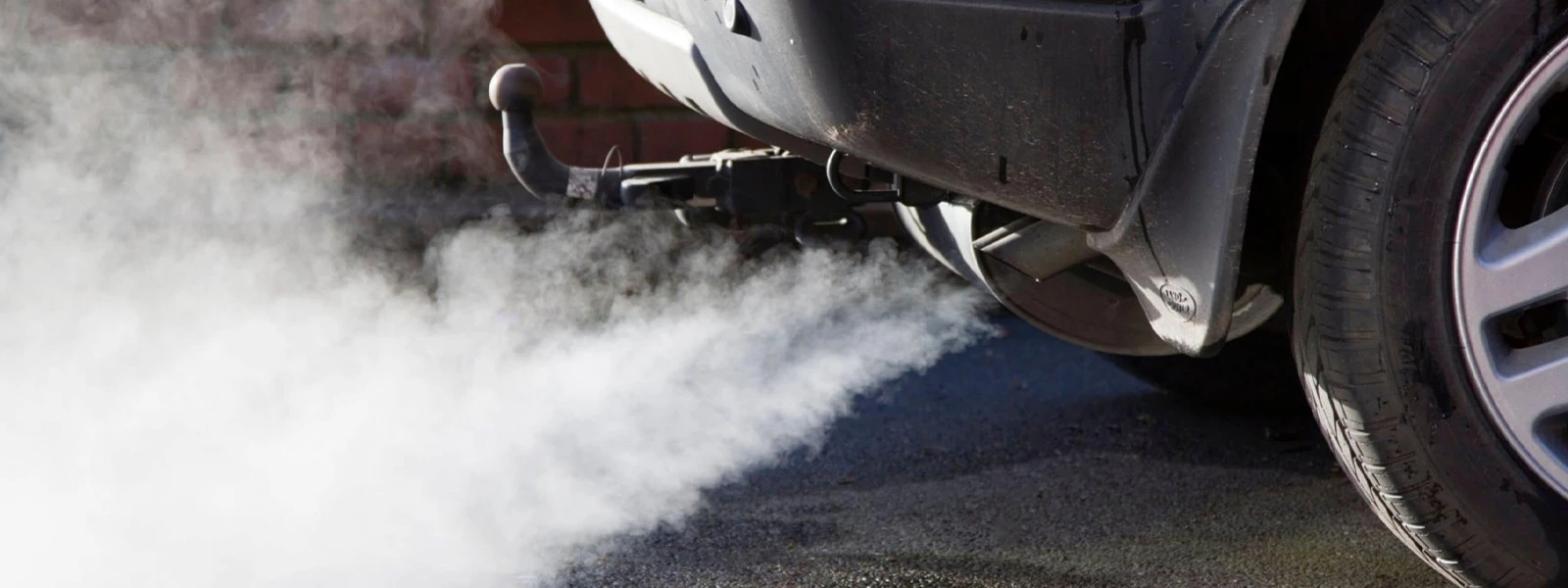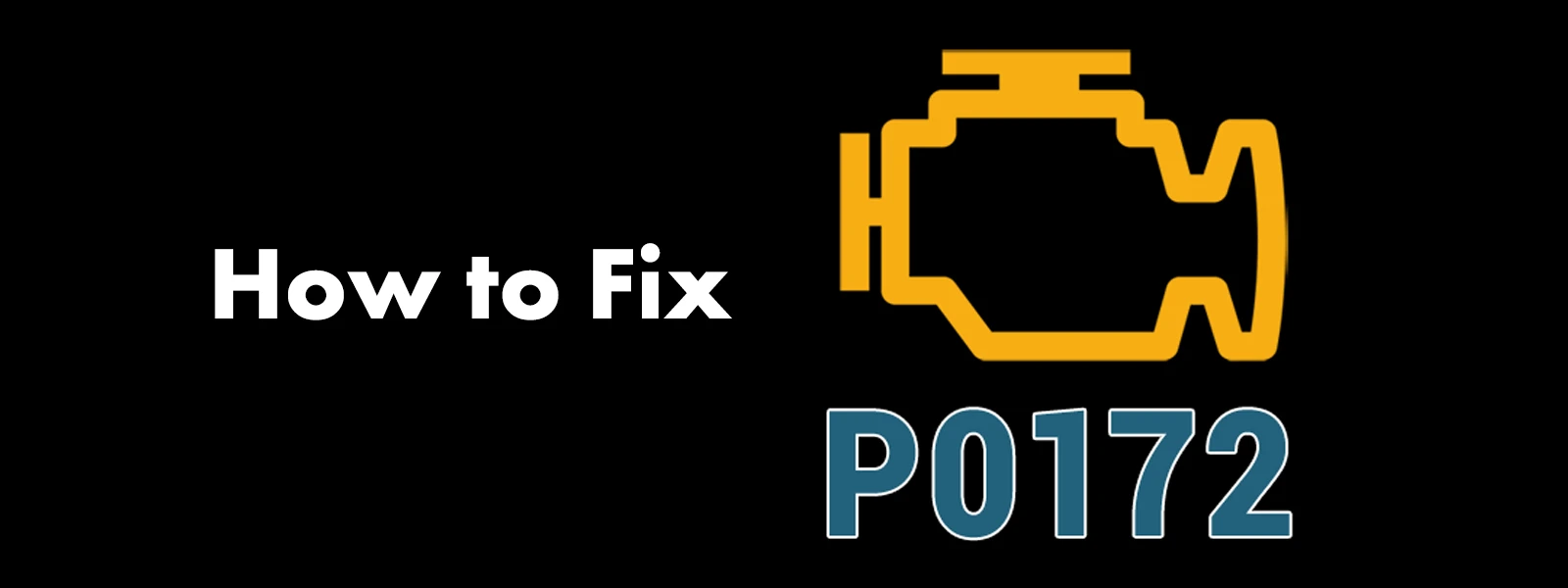P0172 Code: Fuel System Too Rich

P0172 code indicates a rich fuel mixture issue. Diagnosis involves inspecting intake, fuel, exhaust, and PCV systems. Seek professional help for repairs.
Summary
The diagnostic trouble code (DTC) P0172 indicates that the fuel system is running too rich on Bank 1. This occurs when there's an excessive amount of fuel or insufficient oxygen detected by the car's computer in the engine.
Resolving code P0172 involves various methods, but pinpointing the actual cause is crucial. It could range from simply cleaning a component to potentially needing a replacement in rare cases.

What Does the P0172 Code Mean
The diagnostic trouble code (DTC) P0172 indicates a "Fuel System Too Rich (Bank 1)" condition. This code is triggered by your vehicle's computer when it detects an excess of fuel or insufficient oxygen in the engine's air-fuel mixture.
What Does “Bank 1” Mean in P0172
The "Bank 1" aspect of this code specifies that the issue is focused on the side of the engine containing the #1 cylinder. In inline four-cylinder engines, which have only one bank, this bank is automatically designated as bank 1. However, in inline six-cylinder engines, despite their inline configuration, there may be two banks (3 cylinders per bank).

What are the Possible Causes of the P0172 Code
Like any other OBD-II code, a P0172 can stem from various issues. Pinpointing the exact cause typically requires examining critical components responsible for maintaining the correct fuel mixture.
Here are several potential reasons for encountering the P0172 engine code:
1. Contaminated engine oil (extended intervals since the last oil change)
2. Leaking fuel injector(s)
3. Elevated fuel pressure due to obstructions along the fuel return line or a faulty fuel pressure regulator
4. Saturated carbon canister resulting from overfilling the fuel tank
5. Blocked air filter
6. Obstructions within the air intake system
7. Buildup or physical damage in exhaust components like the catalytic converter, exhaust pipe, or muffler
8. Faulty O2 sensor (though O2 sensors more commonly fail by reading lean, not rich)
9. Exhaust leak (upstream of the O2 sensor, which can introduce oxygen into the exhaust stream and often triggers the opposite code instead of P0172)
10. Sensor issues with other components (e.g., coolant temperature sensor, mass airflow sensor)
11. Circuit problems, such as loose connections or damaged wiring
12. PCM issues, including outdated software that requires an update
Identifying the specific cause among these possibilities typically involves a thorough inspection and diagnostic process.

How to Diagnose the P0172 Code
Diagnosing the P0172 code involves a systematic approach to identify the underlying issue accurately. Here's a step-by-step guide on how to diagnose the P0172 code:
· Retrieve the Trouble Code: Use an OBD-II scanner to retrieve the P0172 trouble code from the vehicle's onboard computer.
· Check for Other Codes: Look for any additional codes stored in the computer's memory, as they may provide valuable clues related to the fuel mixture problem.
· Inspect the Freeze Frame Data: Review the freeze frame data associated with the P0172 code, which includes vehicle operating conditions at the time the code was set (e.g., engine load, RPM, coolant temperature).
· Check for Vacuum Leaks: Inspect the engine for vacuum leaks, as they can disrupt the air-fuel mixture. Use a smoke machine or propane torch to identify any leaks visually or by listening to hissing sounds.
· Inspect the Air Intake System: Check the air intake system for restrictions, such as a clogged air filter or blocked airflow sensor. Ensure that the intake ducts and hoses are securely connected and free from damage.
· Check the Fuel System: Inspect the fuel system components, including the fuel injectors, fuel pressure regulator, and fuel lines, for leaks, clogs, or malfunctions. Test the fuel pressure to ensure it falls within the manufacturer's specifications.
· Inspect the Exhaust System: Check the exhaust system for leaks, damage, or obstructions, especially upstream of the oxygen sensor. Ensure that the catalytic converter is functioning properly.
· Inspect the Oxygen Sensor: Test the oxygen sensor(s) using a scan tool or multimeter to verify proper operation. Replace any faulty oxygen sensors as needed.
· Inspect Other Sensors: Test other relevant sensors, such as the mass airflow sensor (MAF), coolant temperature sensor, and throttle position sensor (TPS), for proper operation.
· Check for Engine Misfires: Monitor the engine for misfires using a scan tool and inspect ignition system components (spark plugs, ignition coils, etc.) for wear or damage.
· Inspect the PCV System: Check the Positive Crankcase Ventilation (PCV) system for clogs or malfunctions, as it can affect engine airflow and contribute to a rich fuel mixture.
· Check for Software Updates: Verify if there are any available software updates for the vehicle's powertrain control module (PCM) that may address known issues related to the P0172 code.
· Clear the Codes and Test Drive: After completing the diagnostic steps and addressing any identified issues, clear the trouble codes using the scan tool. Test drive the vehicle to ensure that the P0172 code does not return.
If you're unsure about any aspect of the diagnostic process or lack the necessary tools and experience, it's advisable to seek assistance from a qualified mechanic or automotive technician. They can perform a thorough diagnosis and make any necessary repairs to resolve the P0172 code effectively.
How to Fix the P0172 Code
Fixing the P0172 code involves addressing the underlying issue causing the engine to run too rich. Here's a general guide on how to fix the P0172 code:
1. Address Vacuum Leaks: If vacuum leaks are detected, repair or replace damaged hoses, gaskets, or seals. Ensure all connections are secure and sealed properly.
2. Replace or Clean the Mass Airflow Sensor (MAF): If the MAF sensor is dirty or malfunctioning, clean it using an MAF sensor cleaner or replace it if necessary. Ensure proper installation and calibration.
3. Check and Clean the Air Filter: Inspect the air filter for clogs or dirt buildup. Replace if necessary, and ensure the air filter housing is properly sealed.
4. Inspect and Clean Fuel Injectors: Check the fuel injectors for leaks or clogs. Clean or replace them as needed, and ensure proper fuel atomization.
5. Test Fuel Pressure: Verify that fuel pressure is within the manufacturer's specifications. Replace the fuel pressure regulator or address any restrictions in the fuel system if necessary.
6. Inspect the Oxygen Sensor (O2 Sensor): Test the oxygen sensor(s) for proper operation. Replace any faulty sensors, and ensure proper installation and wiring connections.
7. Check for Exhaust Leaks: Inspect the exhaust system for leaks, cracks, or damage. Repair or replace any faulty components, including the exhaust manifold, catalytic converter, or exhaust pipes.
8. Verify Engine Misfires: Monitor the engine for misfires and address any issues with ignition system components, such as spark plugs, ignition coils, or ignition timing.
9. Test and Replace Sensors: Test other relevant sensors, such as the coolant temperature sensor, throttle position sensor (TPS), or manifold absolute pressure (MAP) sensor. Replace any faulty sensors.
10. Address PCV System Issues: Check the Positive Crankcase Ventilation (PCV) system for clogs or malfunctions. Replace the PCV valve if necessary, and ensure proper ventilation.
11. Perform Software Updates: Check for available software updates for the vehicle's powertrain control module (PCM). Update the PCM software as needed to address known issues related to the P0172 code.
12. Clear the Codes and Test Drive: After making necessary repairs, clear the trouble codes using an OBD-II scanner. Test drive the vehicle to ensure the P0172 code does not return and that the engine operates properly.
If you're unsure about any aspect of the repair process or lack the necessary tools and experience, it's advisable to seek assistance from a qualified mechanic or automotive technician. They can perform a thorough diagnosis and make any necessary repairs to fix the P0172 code effectively.
